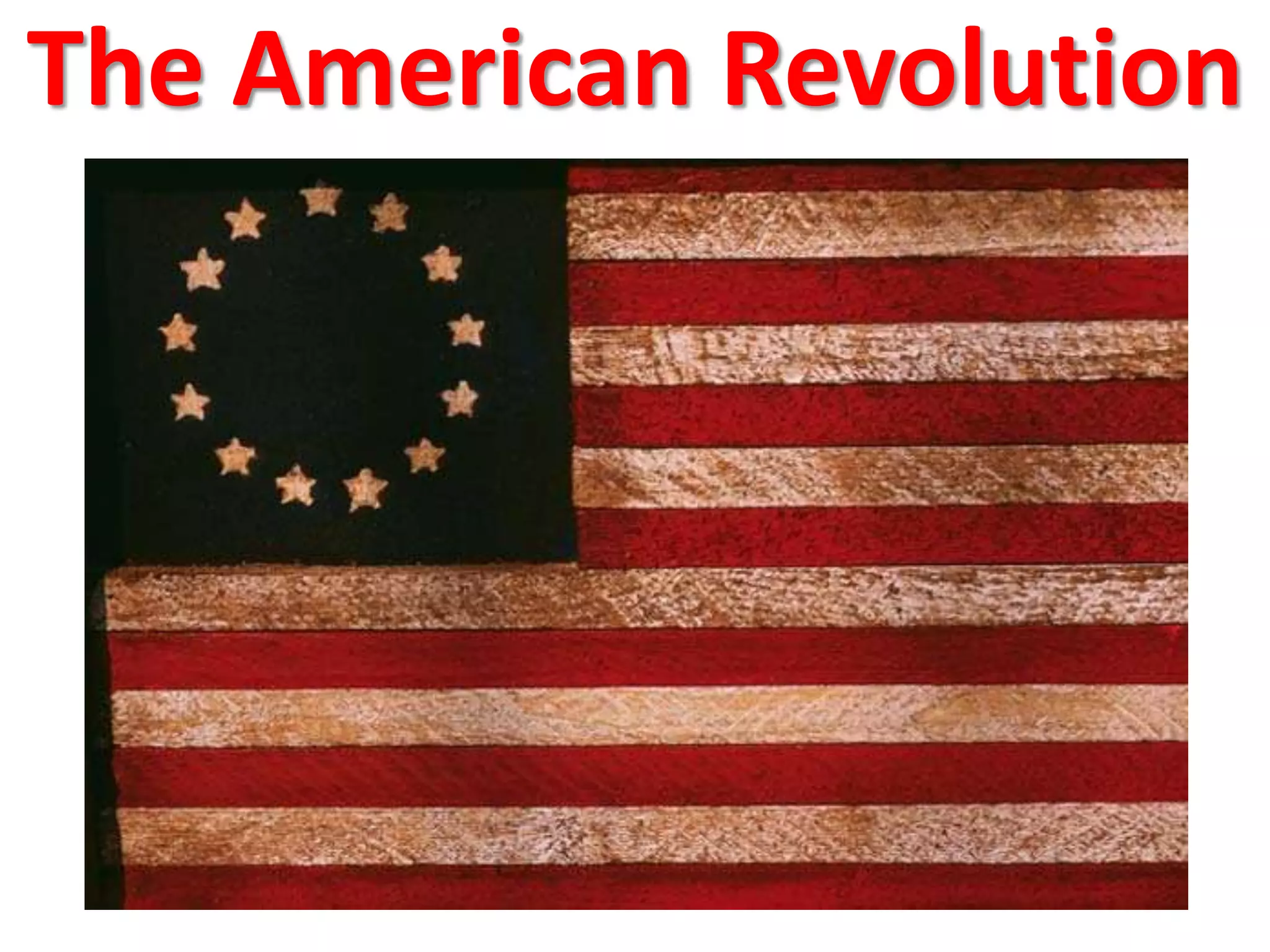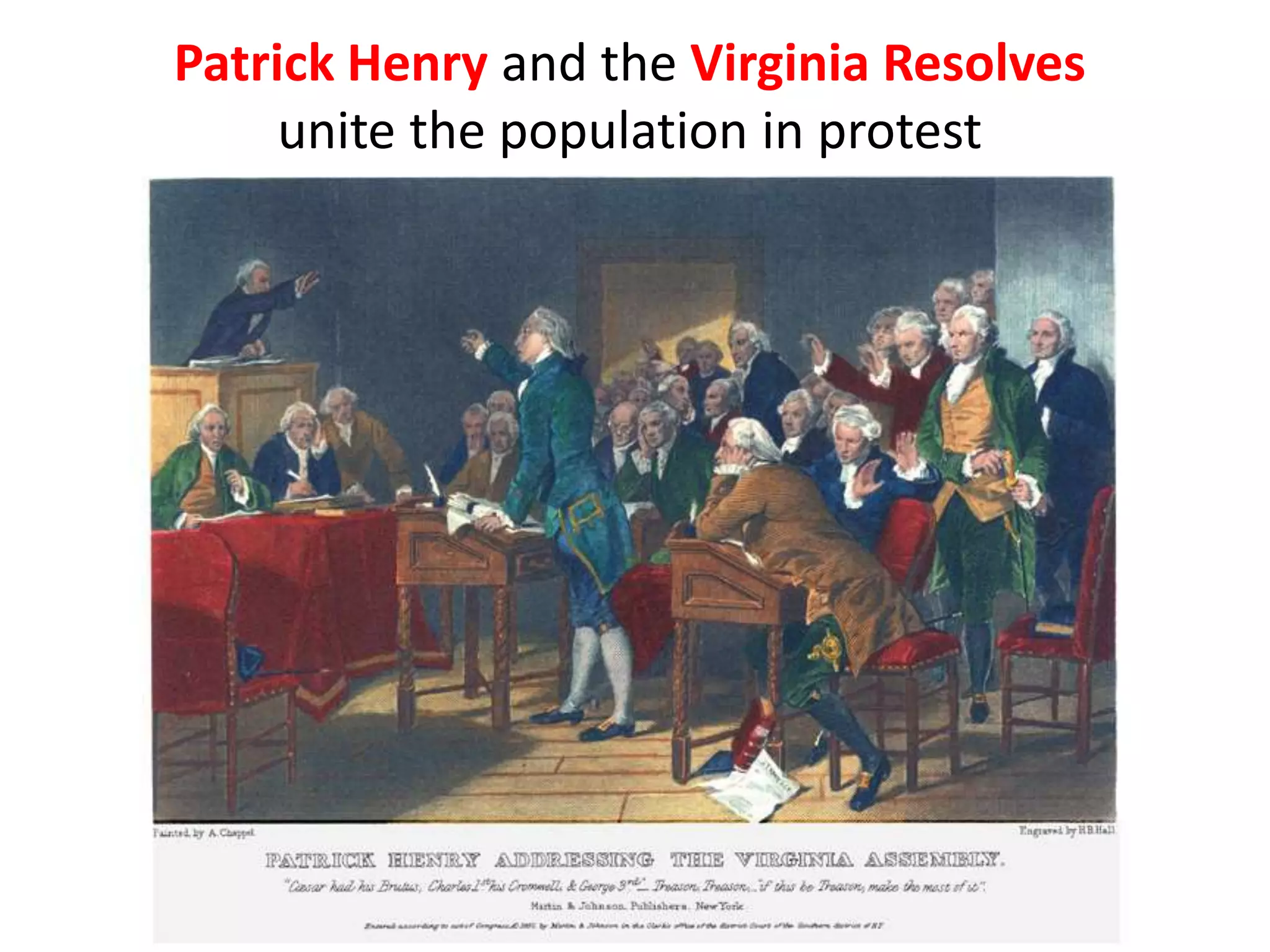The American Revolution can be summarized as follows:
1) The Revolution was a period from 1763-1783 that involved not just the war for independence but also the colonists' transition from seeing themselves as British subjects to an independent American nation.
2) The war officially lasted from 1775-1781, beginning with the battles of Lexington and Concord and ending with the British surrender at Yorktown.
3) The Treaty of Paris in 1783 officially recognized American independence and ceded territory east of the Mississippi River to the new United States.



































![Phase I: The Northern Campaign
[1775-1776]](https://image.slidesharecdn.com/theamericanrevolution-180214174403/75/The-american-revolution-36-2048.jpg)















![Phase II:
NY & PA
[1777-1778]](https://image.slidesharecdn.com/theamericanrevolution-180214174403/75/The-american-revolution-52-2048.jpg)









![Phase III: The Southern Strategy
[1780-1781]](https://image.slidesharecdn.com/theamericanrevolution-180214174403/75/The-american-revolution-62-2048.jpg)







